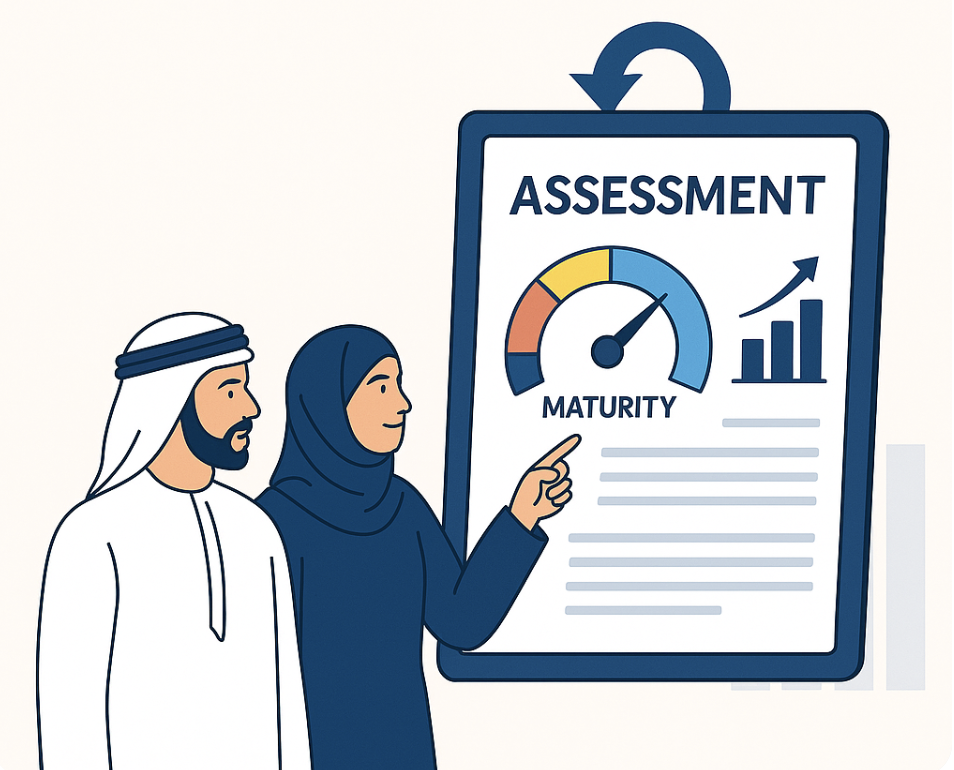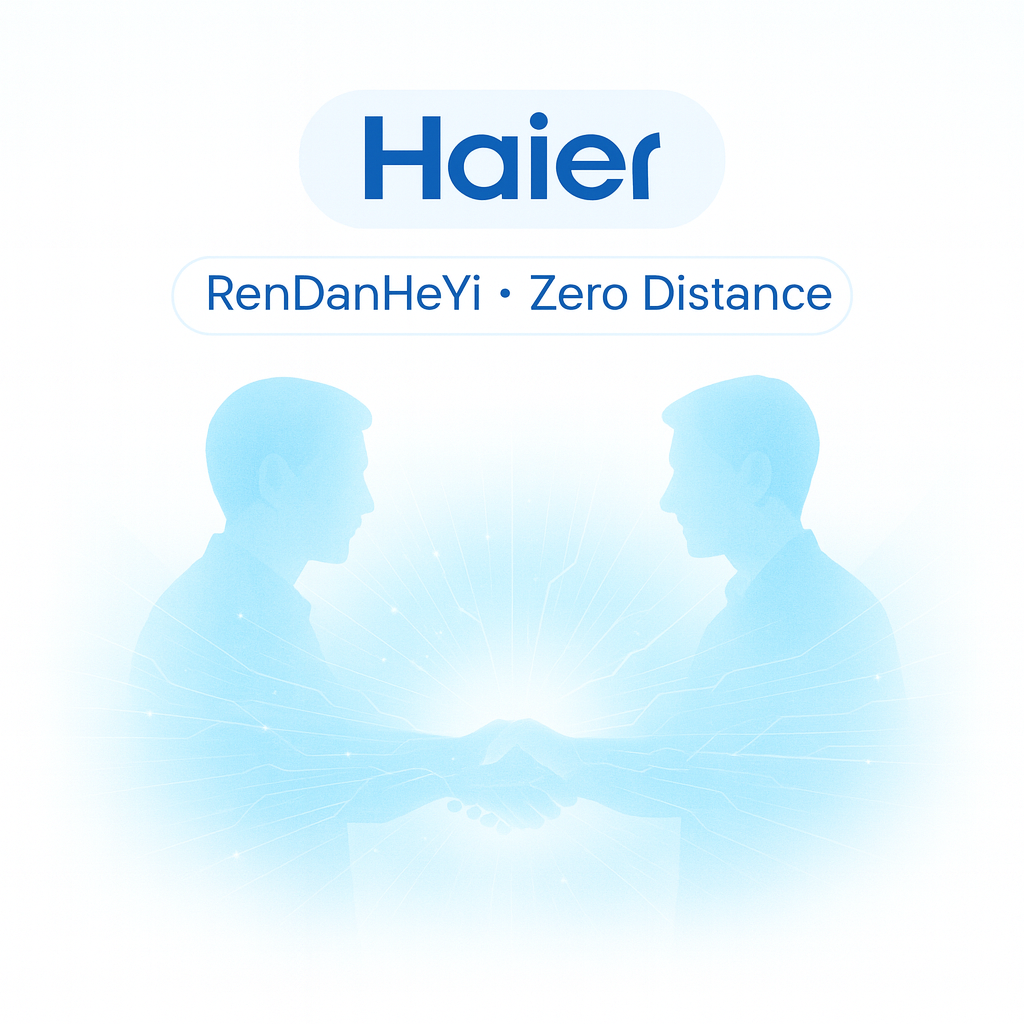What UAE Organisations Can Learn from Haier’s Rendanheyi Model: A Blueprint for Agile, Entrepreneurial Teams
In an era where agility, innovation, and customer-centricity are no longer optional, organisations across the UAE are exploring new operating models to remain competitive and relevant. One model that is generating global attention—but remains largely untapped in the region—is the Rendanheyi model, pioneered by Chinese manufacturer Haier. More than just a structural shift, it offers a radical rethink of how organisations empower people, decentralise decision-making, and create value.
Could this be the blueprint for the next phase of business transformation in the UAE?
What is the Rendanheyi Model?
Originally developed by Zhang Ruimin, CEO of Haier, the Rendanheyi model is a post-industrial, post-hierarchical management system that dismantles bureaucracy in favour of self-managed microenterprises.
At its core, the model is based on:
- Ren = Employee
- Dan = User value
- He Yi = Integration
The goal? Align every employee’s personal value creation with direct user value—eliminating middle management, breaking down silos, and treating internal teams like entrepreneurs.
Key Principles:
- Zero Distance to Users: Every team is directly accountable to customers.
- Microenterprises (MEs): Small, autonomous units with their own P&L.
- Internal Contracts: Teams “bid” for services from internal or external providers.
- Dynamic Ecosystem: Structures shift based on customer value, not hierarchy.
This model has helped Haier become the world’s largest appliance maker, operating like a network of 4,000+ microenterprises rather than a traditional top-down corporation.
Why It Matters for UAE Business Leaders
The UAE has set ambitious goals under Vision 2031 and D33 to lead globally in innovation, digital government, and economic competitiveness. But achieving these goals requires more than digital tools—it calls for organisational agility and adaptive leadership.
Here’s how the Rendanheyi model maps to UAE priorities:
UAE PriorityRendanheyi RelevanceInnovation & EntrepreneurshipFosters internal startups and P&L accountability at team levelDigital GovernmentEnables service teams to be closer to users, reducing red tapeTalent EmpowermentMoves from job descriptions to value-based autonomyPrivate Sector ProductivityReduces managerial overhead, drives bottom-up growth
UAE organisations—especially in telecom, energy, logistics, government, and banking—can draw significant lessons from Haier’s journey to break down silos and empower teams.
Lessons for Agile Transformation
Agile transformation is often limited by traditional hierarchies. The Rendanheyi model challenges this head-on, making it deeply compatible—and potentially transformative—when combined with Agile principles.
Where It Aligns:
- Customer Centricity → Zero distance to end users
- Self-Organising Teams → Microenterprises
- Decentralised Decision-Making → Internal markets & bidding
- Continuous Learning → Each ME adapts, pivots, and evolves
Where It Goes Further:
- Removes the need for project-based funding—teams control their own resources
- Encourages internal competition and collaboration through transparent value exchange
- Shifts HR, finance, and other corporate functions into service providers accountable to teams
This pushes the boundaries of traditional Scrum or SAFe implementations—transforming not just how work is delivered, but how organisations are structured.
Real-World Applications in the GCC
Let’s imagine what this might look like if applied in the UAE:
- Telecom (e.g., Etisalat, du): Customer journey teams act as microenterprises, competing to improve NPS, speed to market, and digital upselling—without relying on central project approvals.
- Energy & Utilities (e.g., ADNOC, DEWA): Field teams and digital innovation labs spin off as value-generating microenterprises with P&L visibility and agile procurement authority.
- Government (e.g., Dubai Municipality, Smart Dubai): Each service centre could operate like a startup, improving citizen experience while drawing support from shared digital and legal platforms.
- Banking & Insurance (e.g., FAB, Emirates NBD): Innovation squads become internal ventures, unbundling new fintech offerings with full ownership of success metrics.
This isn’t just Agile delivery—it’s Agile as a business model.
Barriers to Adoption in the Middle East
Of course, importing a model from a Chinese manufacturer into the Gulf requires cultural sensitivity and pragmatic adaptation. Based on Erin Meyer’s The Culture Map and our work across the region, several challenges are worth anticipating:
1. High Power Distance
- Many UAE firms operate in strongly hierarchical environments. Leaders need to champion empowerment, not just sponsor it.
2. Relationship-Based Trust
- Internal market-style bidding can feel impersonal. Trust must be culturally adapted, possibly with hybrid models.
3. Low Tolerance for Ambiguity
- Radical decentralisation requires comfort with fluid structures. Initial pilots may benefit from more guardrails.
4. Regulatory Constraints
- Especially in banking and government, compliance can slow down true autonomy—solutions must balance speed with safeguards.
Despite these challenges, the intent and direction of the Rendanheyi model aligns well with the UAE’s innovation agenda—provided it’s adapted to local realities.
How to Start: A Practical Path for UAE Leaders
Full-scale reinvention isn’t required to begin exploring the value of Rendanheyi-style agility. Here’s how organisations in the UAE can take the first step:
- Identify an Opportunity Area
Start with one customer-facing business unit (e.g. complaints resolution, onboarding, innovation). - Form a Microenterprise
Set up a cross-functional team with clear customer outcomes, budget authority, and light-touch governance. - Redefine Internal Services
Ask HR, IT, and procurement to act as service providers—with SLAs and satisfaction metrics. - Link Value to Rewards
Create performance incentives based on value delivered to users, not just process KPIs. - Learn and Scale
Treat the pilot as an experiment. Learn fast, iterate, and expand where results are compelling.
Organisations don’t need to adopt the full Haier model overnight. The principle is simple: move value creation closer to the user, and give teams the freedom to own it.
Conclusion
The Rendanheyi model isn’t just a novel management theory—it’s a practical, proven system that could unlock a new wave of innovation and performance for UAE organisations. It offers a bold alternative to top-down bureaucracy, especially for leaders looking to:
- Increase organisational agility
- Attract and retain entrepreneurial talent
- Build self-managing, accountable teams
- Deliver faster, more relevant customer outcomes
At Agility Arabia, we help forward-thinking organisations design and test future-ready operating models tailored to local culture, regulatory needs, and business goals.
🚀 Ready to explore how Agile, decentralised models like Rendanheyi could work in your organisation?




